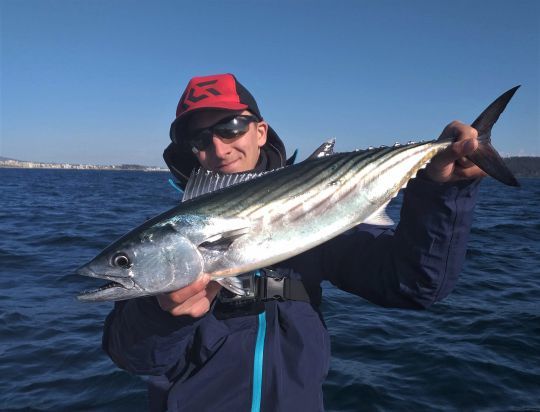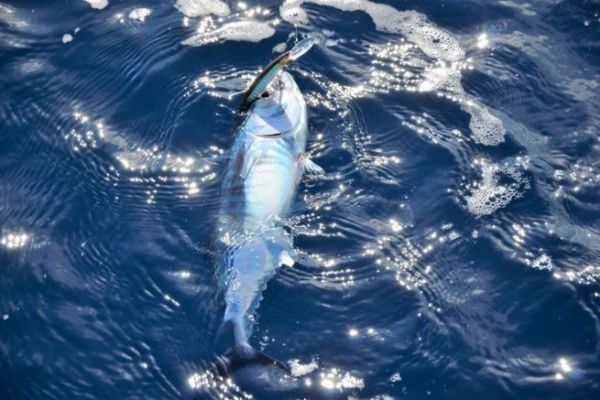Pelagic fish are those that live and move within the water column, away from the seabed. In the Mediterranean, several pelagic species are highly sought after by anglers, both for their fighting spirit and their culinary value. Here are some of the main pelagic species that can be caught in the Mediterranean, either from shore or by boat.
The Atlantic horse mackerel (Trachurus trachurus):
Commonly known as sévereau along the Mediterranean coasts, the Atlantic horse mackerel is a medium-sized pelagic fish often caught in schools. It is valued for its meat and frequently used as live bait. It can be caught both from shore and by boat, most often using lures.
The Atlantic bonito (Sarda sarda):
The bonito is a highly combative fish, often caught by trolling or casting from a boat. It is prized for both its firm flesh and the challenge it offers to anglers.
The little tunny (Euthynnus alletteratus):
The little tunny is a smaller tuna species, commonly caught by trolling. Like the bonito, it is appreciated for its flesh and its fighting strength.

The Mediterranean horse mackerel (Trachurus mediterraneus):
The Mediterranean horse mackerel is a medium-sized pelagic fish, often caught in schools. It can be used as live bait, particularly when targeting bluefin tuna.
The leerfish (Lichia amia):
The leerfish is a powerful and combative predator often found near rocky shores. It is highly valued for its strength and its ability to deliver spectacular fights.

Bluefin tuna (Thunnus thynnus):
Bluefin tuna is one of the most sought-after species due to its large size and powerful fights. It is typically caught offshore, and its capture is regulated to help protect the population.
Swordfish (Xiphias gladius):
The swordfish is a migratory species known for its strength and impressive size. It is usually targeted by trolling with large lures. It is a legendary and very rare catch for recreational anglers.
These species offer a wide range of fishing experiences, from small, feisty fish to impressive migratory giants. If you intend to keep your catch, it is mandatory to tag the fish immediately upon bringing it out of the water. To tag the fish, simply cut the lower part of the caudal fin using scissors or a knife.
Fishing for these species may vary depending on the season and local regulations, so it is crucial to stay up to date with current rules and to learn how to accurately identify similar-looking species.
Source: Peche




